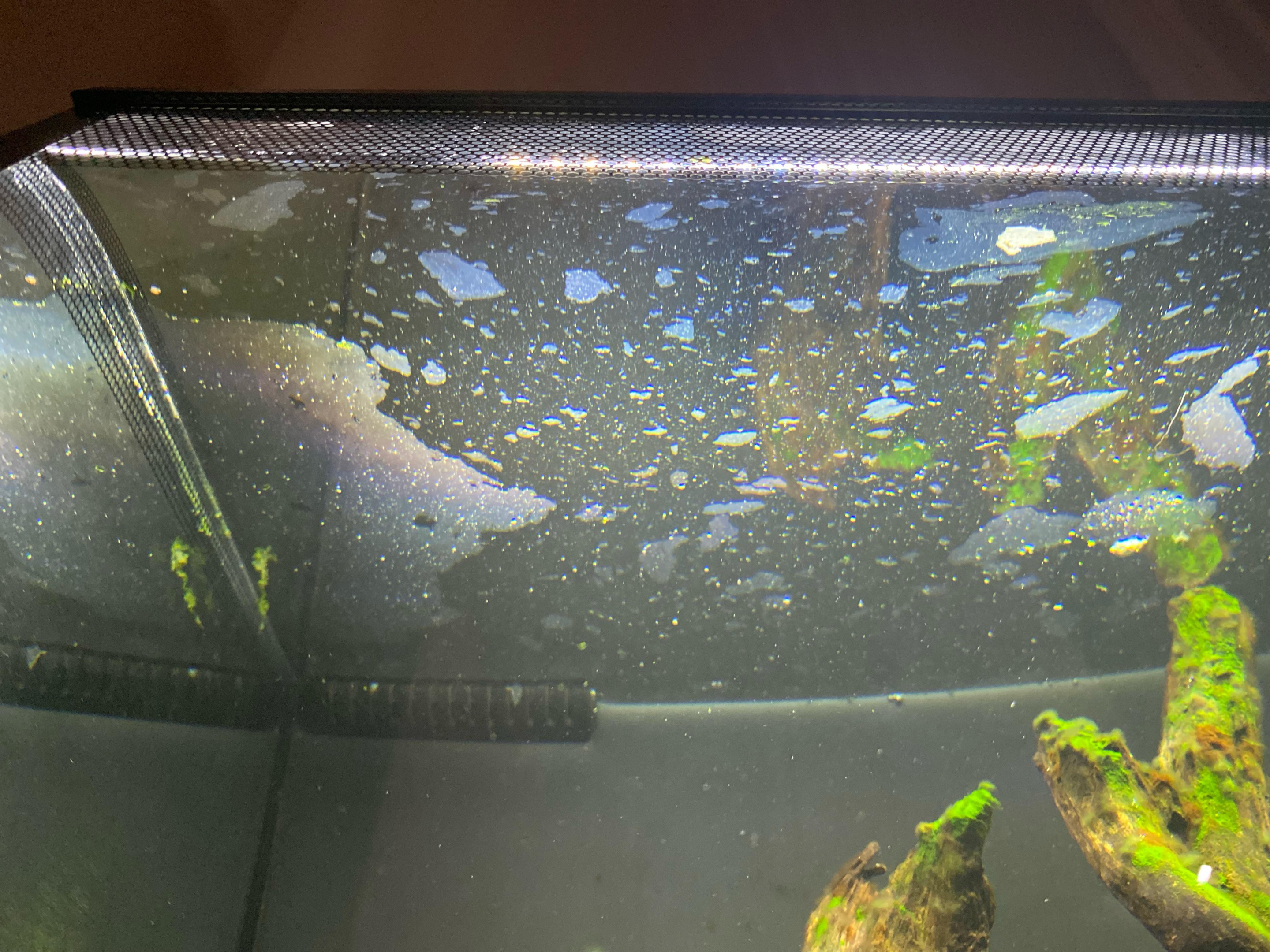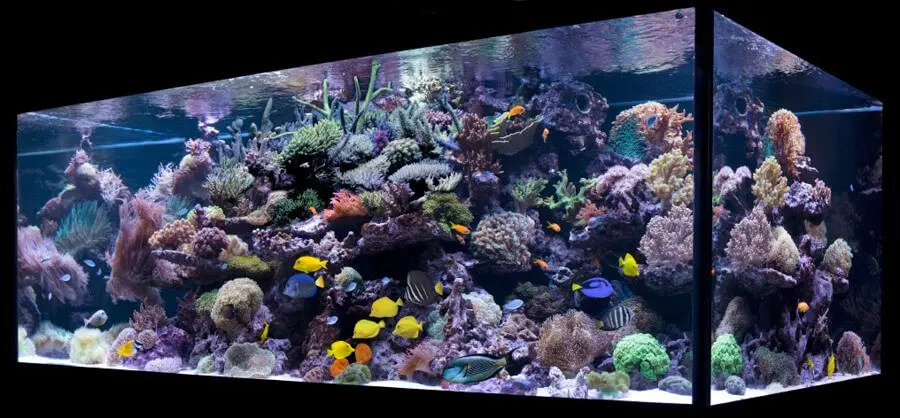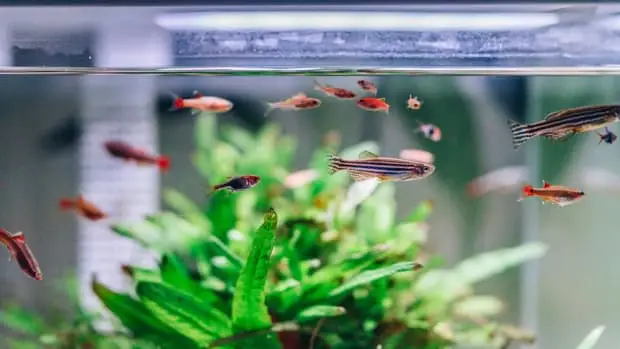Aquariums are a beautiful addition to any home or office space, providing a mesmerizing glimpse into the underwater world.
However, like any other system, aquariums can encounter problems that require troubleshooting.
In this article, we will delve into some common aquarium problems, their causes, and effective solutions to keep your aquatic ecosystem thriving.
Understanding the Basics of Aquarium Maintenance

Before we delve into specific problems and their solutions, let’s start by understanding the importance of regular aquarium maintenance.
Proper maintenance plays a crucial role in preventing and addressing issues that can negatively impact the health of your fish and the overall stability of your aquarium.
When it comes to aquarium maintenance, there are several key factors to consider. These include regular cleaning, proper feeding, and ensuring the correct water temperature. By paying attention to these aspects, you can create a thriving and healthy aquatic environment for your fish.
Importance of Regular Cleaning
Regular cleaning is important for maintaining a healthy aquarium environment. Without proper maintenance, common problems such as poor water quality and algae growth can arise. These issues often stem from excess food, fish waste, and organic waste materials accumulating in the fish tank.
One of the main tasks in regular aquarium maintenance is removing uneaten food and organic waste. This helps prevent toxic ammonia spikes and algae blooms, which can harm fish health. Water changes on a regular basis are also crucial for diluting excess nutrients and toxic gasses.
Biological filtration is another key aspect of proper filtration in an aquarium. Beneficial bacteria break down organic materials and convert ammonia into less harmful substances as part of the nitrogen cycle. Chemical filter media such as activated carbon can also help remove specific pollutants from the water.
Direct sunlight can contribute to algae growth and temperature fluctuations, so it’s essential to place the aquarium away from bright light. Cool air can help maintain healthy oxygen levels and prevent algae blooms.
When troubleshooting aquarium problems, it’s essential to monitor ammonia levels and conduct water tests regularly. Replacing filter media and introducing bacterial additives can aid in maintaining water quality. Avoid overfeeding to prevent excess waste and nutrient buildup.
Regular cleaning and maintenance are vital for preventing and addressing common issues in an aquarium. By following simple solutions and performing regular water changes, fish can thrive in a healthy and balanced environment.
The Role of Proper Feeding

Proper feeding is integral to maintaining a healthy aquarium ecosystem. When feeding your tropical fish, it’s crucial to avoid overfeeding, as this can lead to poor water quality and algae growth. Uneaten food and excess food can result in fish waste and the accumulation of organic waste materials, contributing to cloudy water and toxic ammonia spikes.
To address these issues, regular water changes are necessary to dilute excess nutrients and maintain optimal water quality. Additionally, biological filtration, facilitated by beneficial bacteria, helps break down organic waste through the nitrogen cycle.
Utilizing chemical filter media like activated carbon can further aid in removing specific pollutants from the aquarium water.
It’s essential to be mindful of factors such as direct sunlight exposure, as this can promote algae growth and cause fluctuations in temperature within the aquarium.
Proper filtration mechanisms, coupled with introducing additional oxygen, can help counteract these effects and ensure a healthy environment for your fish.
Ensuring Correct Water Temperature
Temperature fluctuations can be detrimental to the health of your fish. It’s important to maintain a stable water temperature within the optimal range for your specific fish species. Rapid temperature changes can stress the fish and make them more susceptible to diseases.
Utilizing a reliable aquarium heater and regularly monitoring the temperature is crucial to maintaining a stable and comfortable environment for your fish.
When it comes to choosing an aquarium heater, it’s important to consider the size of your tank and the specific temperature requirements of your fish.
A heater that is too small may struggle to maintain the desired temperature, while one that is too large can cause overheating. It’s also important to position the heater correctly to ensure even heat distribution throughout the tank.
In addition to a heater, it’s also important to consider the ambient temperature of the room where your aquarium is located.
Extreme temperature fluctuations in the room can affect the water temperature in the tank. By keeping the aquarium away from direct sunlight and drafts, you can help maintain a more stable environment for your fish.
Regularly monitoring the water temperature is crucial to ensure the well-being of your fish. By using a reliable thermometer and making adjustments as needed, you can provide a comfortable and stress-free environment for your aquatic pets.
Identifying Common Aquarium Problems

Now that we comprehend the significance of regular maintenance, let’s explore some common aquarium problems that can arise.
Algae Overgrowth
Algae is a part of every aquarium ecosystem, but overgrowth can be unsightly and disrupt the balance of the aquarium. This can occur due to excessive nutrients in the water, prolonged exposure to light, or irregular maintenance practices. Algae overgrowth not only affects the aesthetic appeal of your aquarium but can also overshadow and hinder the growth of your aquatic plants.
When algae overgrowth becomes a problem, it can take on various forms, such as green, brown, or red algae. Green algae, also known as “green water,” can turn the water in your aquarium into a cloudy greenish hue. Brown algae, on the other hand, can give surfaces in your tank a slimy appearance, while red algae can create a reddish film on the glass and decorations.
To combat algae overgrowth, it is important to maintain a proper balance of nutrients in the water. Regular water changes, proper filtration, and controlling the amount of light your aquarium receives can help prevent excessive algae growth.
Additionally, introducing algae-eating fish or invertebrates, such as plecos or snails, can help control the algae population in your tank.
Cloudy Water Issues
Cloudy or turbid water is a common concern among aquarium enthusiasts. This can be caused by various factors, such as overfeeding, inadequate filtration, or an imbalance in the nitrogen cycle. Cloudy water not only obstructs the view of your fish but can also indicate an underlying problem that needs to be addressed promptly.
Cloudy water can have different appearances, ranging from a milky white to a greenish or brownish tint. It can be caused by suspended particles, such as uneaten food, fish waste, or decaying plant matter. These particles can cloud the water and make it difficult for your fish to thrive in a healthy environment.
To resolve cloudy water issues, it is crucial to identify and address the root cause. Regular water testing can help determine if there are any imbalances in the nitrogen cycle, such as high ammonia or nitrate levels.
Adjusting your feeding habits and ensuring proper filtration can also help clear up the water. Additionally, using water clarifiers or adding beneficial bacteria to your aquarium can aid in restoring water clarity.
Fish Illness and Disease
Just like any other living creatures, fish are susceptible to illnesses and diseases. Poor water quality, stress, and improper nutrition can weaken their immune system, making them more prone to infections. It’s essential to familiarize yourself with common fish diseases and their symptoms to detect and treat any potential health issues before they escalate.
There are various fish diseases that can affect your aquarium inhabitants, including fungal infections, bacterial infections, and parasitic infestations.
Symptoms of fish illnesses can range from visible physical changes, such as discoloration or lesions, to behavioral changes, such as loss of appetite or abnormal swimming patterns.
Preventing fish illnesses involves maintaining optimal water conditions, providing a balanced diet, and minimizing stress in your aquarium.
Regular water testing and proper filtration can help ensure a healthy environment for your fish. Quarantining new fish before introducing them to your main tank can also help prevent the spread of diseases.
If you notice any signs of illness in your fish, it is important to take immediate action. Consult with a veterinarian who specializes in aquatic animals or seek advice from experienced aquarium hobbyists to determine the best course of treatment. Early detection and treatment can greatly increase the chances of a successful recovery for your fish.
Solutions for Common Aquarium Problems

Now that we have identified some prevalent issues, let’s explore effective solutions to troubleshoot and resolve them.
Dealing with Algae Overgrowth
To combat algae overgrowth, ensuring a balanced ecosystem is key. Implementing an appropriate lighting schedule, reducing nutrient levels through regular water changes, and incorporating algae-eating organisms, such as snails or shrimp, can help control algae growth.
Additionally, manually removing excess algae and cleaning the tank walls can also aid in restoring visual clarity in your aquarium.
When it comes to maintaining a balanced ecosystem, it’s important to understand the different types of algae that can grow in your aquarium. Some common types include green algae, brown algae, and red algae. Each type has its own causes and solutions, so it’s essential to identify the specific type of algae you are dealing with.
Green algae, for example, thrives in the presence of excess nutrients, such as nitrates and phosphates. To prevent green algae overgrowth, it’s important to monitor and control these nutrient levels through regular water testing and appropriate water changes.
Additionally, adjusting the lighting schedule to provide the right amount of light for your specific aquarium setup can help prevent excessive algae growth.
Brown algae, on the other hand, is often caused by low light levels and high levels of silicates. Increasing the lighting duration or intensity, as well as reducing silicate levels through the use of specialized filter media, can help combat brown algae. It’s also important to check the quality of your water source, as some tap water may contain high levels of silicates.
Red algae, also known as brush algae or beard algae, can be a bit more challenging to control. It often thrives in aquariums with low carbon dioxide levels and high phosphate levels. Increasing carbon dioxide levels through the use of CO2 injection systems or liquid carbon supplements can help inhibit red algae growth.
Additionally, reducing phosphate levels through regular water changes and the use of phosphate removers can be effective in preventing red algae outbreaks.
Clearing Up Cloudy Water
If you’re faced with cloudy water, identifying the underlying cause is crucial. Conducting regular water tests to monitor the levels of ammonia, nitrites, and nitrates is essential.
Adjusting feeding habits, improving filtration efficiency, and ensuring proper water circulation can address the root cause and restore water clarity. Additionally, utilizing activated carbon or water clarifiers can aid in clearing away suspended particles.
Cloudy water can have various causes, including bacterial blooms, excess organic waste, or improper filtration. Bacterial blooms, for example, occur when there is an imbalance in the bacterial population in the aquarium.
This can be caused by overfeeding, inadequate filtration, or poor water quality. To address bacterial blooms, it’s important to improve filtration by cleaning or replacing filter media, ensuring proper water flow, and maintaining optimal water parameters.
Excess organic waste, such as uneaten food or decaying plant matter, can also contribute to cloudy water.
Adjusting feeding habits to prevent overfeeding and removing any uneaten food from the aquarium can help reduce organic waste. Regular water changes and the use of activated carbon can also aid in removing dissolved organic compounds and improving water clarity.
Improper filtration can be another culprit behind cloudy water. It’s important to ensure that your filtration system is properly sized for your aquarium and that the filter media are clean and functioning effectively.
Regular maintenance, including cleaning or replacing filter media, can help prevent clogs and ensure optimal filtration efficiency.
Treating Fish Illness and Disease

When it comes to fish illness, prevention is the best approach. However, if your fish does fall ill, swift action is necessary. Quarantining affected individuals, conducting water tests, and consulting with aquatic veterinarians or experienced professionals can help diagnose the issue and provide appropriate treatment.
Administering medication as prescribed and maintaining optimal water conditions can aid in the recovery process.
Preventing fish illness starts with providing a clean and stable environment for your fish. Regular water testing and maintenance, including proper filtration and water changes, can help prevent the build-up of harmful substances and maintain optimal water quality.
It’s also important to quarantine any new fish before introducing them to the main aquarium to prevent the spread of diseases.
When it comes to diagnosing and treating fish illness, it’s important to observe any changes in behavior, appetite, or physical appearance. Conducting water tests to check for any abnormalities in ammonia, nitrites, nitrates, and pH levels can provide valuable information about the health of your aquarium.
Consulting with aquatic veterinarians or experienced professionals can help identify the specific disease or illness and provide appropriate treatment options.
Administering medication as prescribed is crucial for the successful treatment of fish illness. It’s important to follow the instructions carefully and monitor the fish closely for any signs of improvement or adverse reactions.
Maintaining optimal water conditions, including temperature, pH, and water quality, can also support the fish’s immune system and aid in the recovery process.
Preventing Future Aquarium Problems

Now that we have tackled current issues, it’s time to focus on preventing future problems from arising. By taking proactive measures, you can ensure a healthy and thriving aquatic environment for your fish.
Regular Maintenance Tips
Consistency is key when it comes to aquarium maintenance. Implementing a regular maintenance routine is crucial for the well-being of your fish. Start by scheduling regular water changes to remove accumulated toxins and maintain water quality. Additionally, cleaning filters on a regular basis will prevent clogging and ensure optimal filtration efficiency.
By monitoring water parameters such as temperature, pH levels, and ammonia levels, you can detect any potential issues early on and take appropriate action. Remember, prevention is always better than cure!
Furthermore, during your regular maintenance routine, it is essential to inspect the aquarium for any signs of wear or damage. Check for cracks in the glass or any leaks that might compromise the structural integrity of the tank. Addressing these issues promptly will prevent any catastrophic failures and potential harm to your fish.
Proper Feeding Guidelines
Feeding your fish a balanced diet is crucial for their overall health and well-being. Follow appropriate feeding guidelines to ensure that your fish receive the necessary nutrients without overfeeding. Overfeeding can lead to various problems such as obesity, poor water quality, and digestive issues.
Implementing a feeding schedule will help you maintain portion control and prevent excessive food waste. Observe your fish’s appetite and behavior to gauge their nutritional needs accurately. Adjust the feeding amounts accordingly to prevent underfeeding or overfeeding.
Additionally, consider incorporating a variety of food types into your fish’s diet. Different species have different dietary requirements, and providing a diverse range of food options will ensure that they receive all the essential nutrients they need.
Ideal Water Conditions for Healthy Fish
Researching the specific water parameters required by your fish species is crucial for their long-term health and well-being. Each species has unique preferences when it comes to water temperature, pH levels, hardness, and salinity. Strive to create an environment that mimics their natural habitat as closely as possible.
Utilize appropriate water conditioners to remove chlorine or other harmful contaminants that can compromise your fish’s health. These conditioners also help to neutralize heavy metals and promote a safe and stable aquatic environment.
Regularly testing the water parameters using reliable test kits will allow you to monitor any fluctuations and make necessary adjustments. Maintaining stable water conditions is vital for the overall health and stress reduction of your fish.
Remember, prevention is the key to avoiding future aquarium problems. By implementing regular maintenance routines, following proper feeding guidelines, and creating ideal water conditions, you can provide a healthy and thriving environment for your fish to flourish.
Advanced Aquarium Troubleshooting

While most problems can be resolved through regular maintenance and monitoring, some situations require advanced troubleshooting techniques.
Dealing with Persistent Problems
If you encounter persistent problems despite your best efforts, it may be necessary to seek professional help. Consulting with experienced aquarists or contacting aquarium service providers can offer specialized knowledge and guidance to tackle complex issues.
Investing in High-Quality Aquarium Equipment
The quality of your aquarium equipment can greatly impact the overall health and stability of your aquarium. Investing in reliable and efficient filtration systems, heaters, and lighting can help prevent many common problems before they arise, ensuring a thriving aquatic ecosystem.
Conclusion
In conclusion, troubleshooting common aquarium problems requires a combination of regular maintenance, proper feeding, and swift action when issues arise.
By understanding the basics of aquarium maintenance and identifying specific problems, we can implement effective solutions to prevent and resolve issues, ensuring a healthy and vibrant underwater world for our fish.
Remember, a little bit of knowledge and consistent care can go a long way in maintaining a thriving aquarium.

